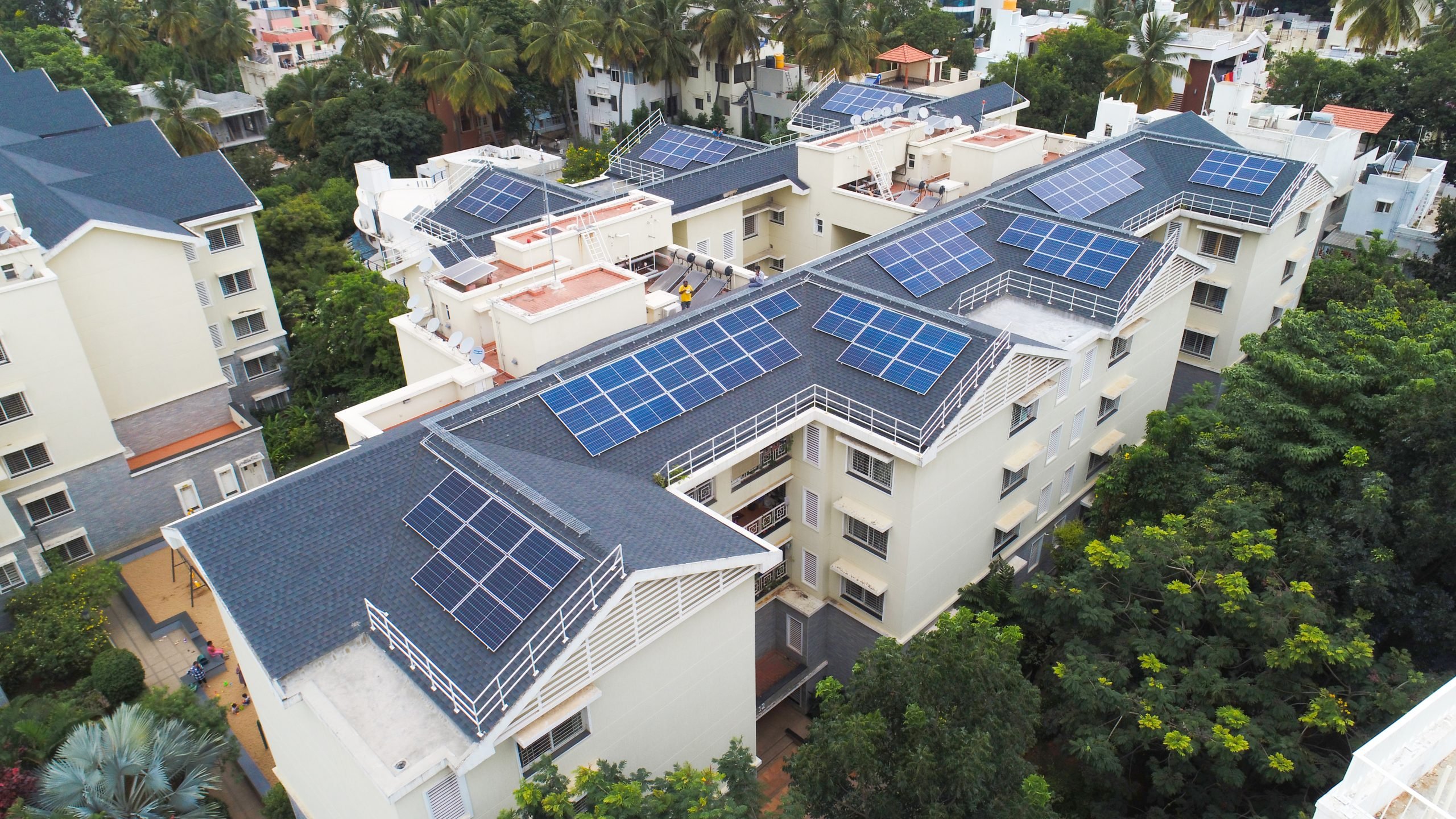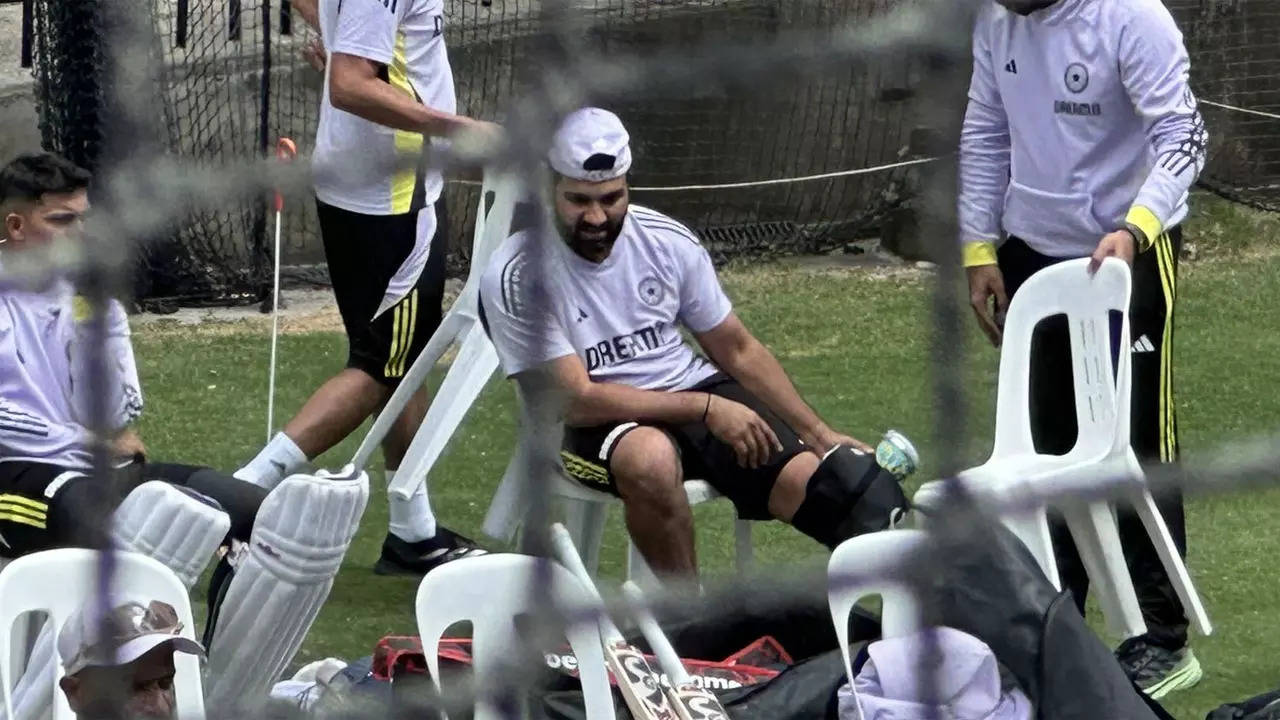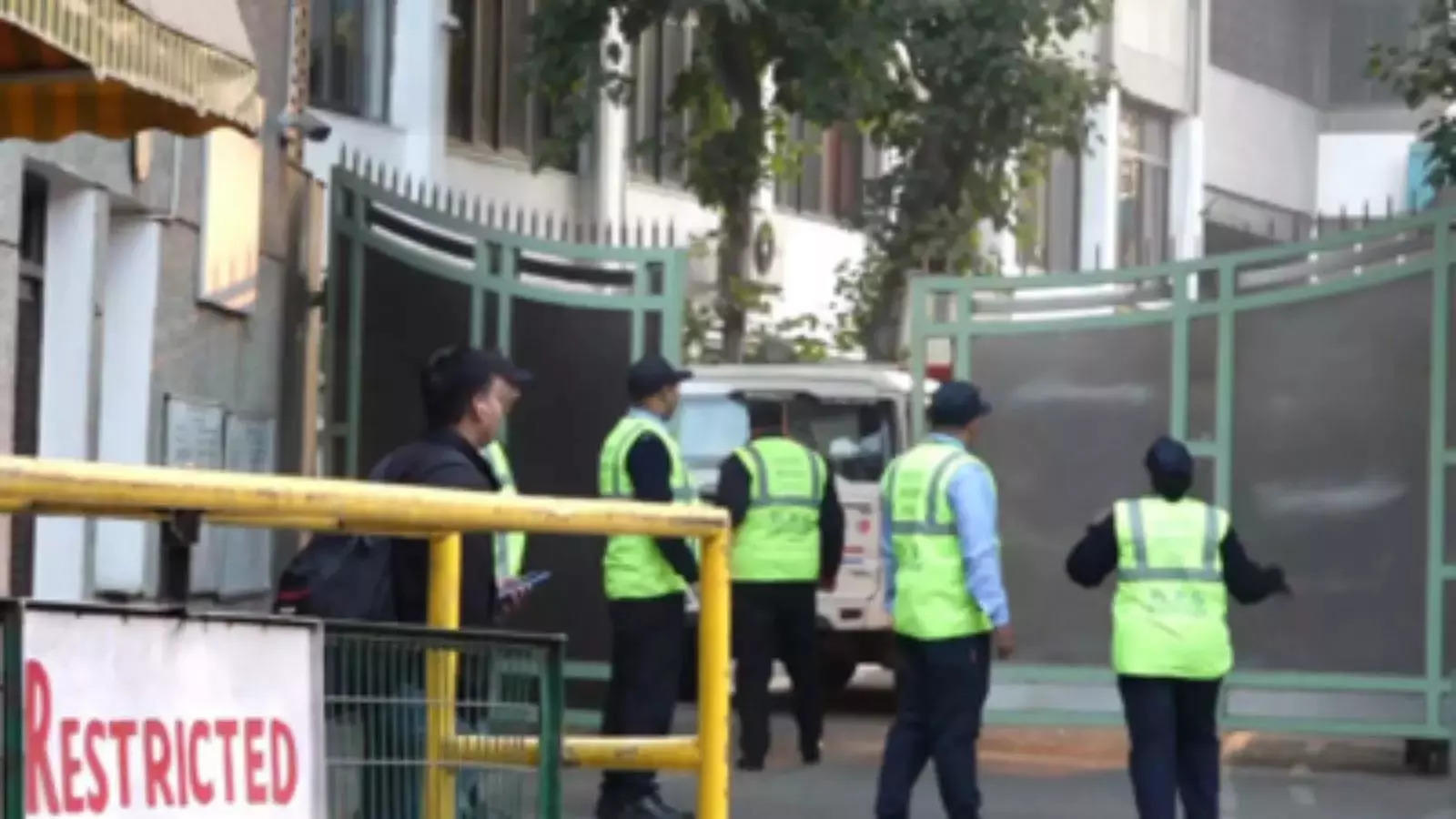Solar subsidy for housing society explained
If you are a committee or RWA member and you’re thinking about going solar by availing the government subsidy, this article will help you understand– Solar system subsidy details for housing societies across states Example of the approximate cost of going solar with and without subsidy Steps to apply for the solar subsidy The process for installing solar after applying for the subsidy The post Solar subsidy for housing society explained appeared first on Rooftop Solar for your home and more - Blog | SolarSquare.

On February 29, 2024, Prime Minister Narendra Modi launched the PM Surya Ghar Muft Bijli Yojana, a landmark initiative backed by a ₹75,021 crore investment. Since the announcement, the movement has garnered 1.28 crore registrations and 14.84 lakh applications as of August 2024 across residential and commercial segments all over India.
With the promise of substantial subsidies, housing societies are exploring how they can harness the sun’s power to achieve massive savings on electricity bills and energy independence, while also playing a crucial role in India’s journey toward net zero carbon emissions.
An outstanding example of project cost savings on solar installation is SolarSquare’s largest housing society solar installation, a 400 kW project at Godrej Infinity in Pune. The housing society secured a subsidy of ₹60 lakhs slashing the total project cost by an impressive ~27%.
Another example is our 100 kW project at Dwarka City Sector CHS, Pune. This housing society secured a subsidy of ₹18 lakhs, slashing the total project cost by an impressive ~30%.
The electricity bill savings generated through solar power will surpass the initial investment within the next two years, after which society will enjoy the benefits of free electricity.
If you are a committee or RWA member and you’re thinking about going solar by availing the solar subsidy for housing society, this article will help you understand–
- Solar system subsidy for housing societies across states
- Example of the approximate cost of going solar with and without subsidy
- Steps to apply for the solar subsidy
- The process for installing solar after applying for the subsidy
Solar Subsidy for Housing Societies in India
While the PM Surya Ghar Muft Bijli Yojana scheme offers significant subsidies to individual homeowners, it also provides substantial financial support to housing societies aiming to adopt solar energy on a larger scale.
Housing societies can benefit from a subsidy of ₹18,000 per kW, applicable for installations up to 500 kW. This applies to all Indian states. This subsidy can reduce the overall cost by up to ₹90 lakhs, making it a game-changer for communities looking to transition to solar power.
By embracing this opportunity, housing societies can drastically cut their electricity costs, with many expected to achieve full savings within a few years of installation.
Steps to Apply for Solar Subsidy for Housing Society

Applying for the solar subsidy under the PM Surya Ghar Muft Bijli Yojana is straightforward. However, you must partner with a reliable solar vendor, like SolarSquare who can guide your housing society through every step. If you’re a society member eager to see your CHS go solar, choosing the right vendor can make all the difference, ensuring a smooth and successful application.
Here’s a step-by-step guide to help you navigate the process.
Step 1: Visit the national portal for rooftop solar – PM Surya Ghar Muft Bijli Yojana website. Click on the ‘Apply for Rooftop Solar’ button on the left-hand side of the homepage.
Step 2: Proceed to the ‘Registration’ section. You should select your state, district, and electricity distribution company (DISCOM). Enter your customer account number and click ‘Next’ to continue.
Step 3: Enter your mobile number and email address. Once you’ve entered these details, click ‘Proceed’.
Step 4: Fill out the ‘Apply for Rooftop Solar Installation’ form with the required details. This will include personal information, details about your property, and your electricity connection. Then, upload the necessary documents and click the ‘Final Submission’ button to submit your application.
Step 5: After submitting your application, you will need to wait for feasibility clearance from your DISCOM. This stage is important as it determines whether your house is eligible for solar installation. Once approved, you can proceed with the installation process.
Step 6: With the feasibility approval ready, you can commence solar installation.
Step 7: After installing the solar plant, submit the plant details through the portal and apply for a net meter. This meter will measure the electricity generated and consumed, allowing you to receive credits for any excess power sent back to the grid.
Step 8: After installing the net meter, your DISCOM will conduct an inspection. Following a successful inspection, they will create a commissioning certificate from the portal, verifying that your solar system is functioning.
Step 9: After getting the commissioning certificate, return to the PM Surya Ghar Muft Bijli Yojana webpage and submit your bank account information and a cancelled cheque. The subsidy will be credited to your bank account within the stipulated timeframe by the government.
How Long Does It Take to Process the Subsidy for Housing Societies?
After filing the subsidy application, the local DISCOM or equivalent agency will typically review and accept it within 2-4 weeks. The subsidy amount is transferred into the society’s bank account within a few weeks after project completion (the step after commissioning).
Since the recent Lok Sabha elections, the government has streamlined the subsidy disbursement process to prevent delays, with faster approvals and digital processing. Depending on local administrative efficiency, most housing societies get subsidies within 2-3 months of applying. However, you need to keep tracking the subsidy status on the PM Surya Ghar portal to determine when you will receive the subsidy amount.
Documents Required for Solar Subsidy for Housing Society
Housing societies must ensure they have the documents below to secure government subsidies.
- Proof of Identity and Address
- Identity proof of the society’s authorised signatory (e.g., Aadhaar card, PAN card).
- Address proof of the society’s registered office (e.g., utility bill, rental agreement).
- Society Registration Certificate
A copy of the society’s registration certificate, which is proof of the society’s legal existence. - Electricity Bills
The most recent electricity bill(s) for the society’s common areas or the building where the solar system will be installed. - Resolution of the Society
A formal resolution passed by the society’s AGM or managing committee authorising solar panel installation and appointing a committee to oversee the project. - Roof Ownership Certificate
Documentation proving the society’s ownership or legal right to use the roof where the solar panels will be installed. - No Objection Certificate (NOC)
An NOC from the local municipal authority, if required, to allow the installation of solar panels on the society’s property. - Feasibility Report
A report from DISCOM or an accredited solar vendor that assesses the suitability of the site for solar installation and provides technical specifications.
Process for Installing Rooftop Solar for Housing Society

Installing a solar power system is a multi-step process that can vary significantly depending on the vendor. While many local vendors offer basic, non-engineered services, SolarSquare takes a comprehensive and meticulous approach to ensure your solar installation works for the long run.
Here’s how our process stands apart:
1. Initial consultation and site assessment
We discuss your energy needs, budget, and other relevant factors. Following this, our solar expert assesses your roof’s orientation, shading, and structural integrity to determine the optimal setup for maximum energy production. Your electricity bills will be analysed to determine the optimal solar system size.
2. Design and planning
Basis the site assessment, the vendor will develop a personalised design for your solar power system. This design includes the layout of the solar panels, the placement of the inverter, the mounting structures, and the connection to your existing electrical system.
Once you have approved the design and plan, we will prepare the required documentation for the next phase.
3. Approval process
Before starting the installation, we will help you get the necessary permissions from the local government, such as building permits and electrical inspections. The DISCOM will examine the proposal to make sure it meets the rules and then issue the necessary permits.
We will also help you complete the subsidy application and get the feasibility approval.
4. Installation and commissioning
Usually, the installation consists of putting the solar panels on your roof, installing the inverter, and tying the system to your electric grid. The whole procedure will take less than 8 hours with SolarSquare, unlike other local vendors who will take a few days to finish.
The system is completely tested to guarantee it runs as intended when the installation is finished. Commissioning marks the last phase when the DISCOM checks the system and produces a commissioning certificate verifying that the system is ready for use.
5. Post-installation support
We offer post-installation assistance through 360-degree maintenance to guarantee your solar power system runs as it should after commissioning. This maintenance includes resolving technical issues, system performance monitoring, and solar panel deep cleaning.
Avail Solar Subsidy for Housing Society with SolarSquare
SolarSquare is India’s #1 home solar company and the preferred choice for housing societies looking to switch to solar energy. With over a decade of experience, SolarSquare has completed numerous rooftop solar projects for housing societies, demonstrating their expertise and reliability.
We take the hassle out of applying for a solar subsidy. From your initial application to the final disbursement, we handle all the paperwork, collaborate with the appropriate authorities, and guarantee that you get your subsidy fast and effectively.
Don’t miss out on making the best out of the rooftop solar subsidy scheme and switch towards sahi solar with SolarSquare – contact us today
FAQs
Q1. How much subsidy is a housing society eligible for under PM Surya Ghar Muft Bijli Yojana?
Ans. Housing societies are eligible for a government subsidy of ₹18,000 per kilowatt, up to a maximum of ₹90 lakh for 500 kilowatts.
Q2. How can you apply for PM Surya Ghar Muft Bijli Yojana as a housing society?
Ans. You can apply for the Rooftop Solar Scheme or the PM Surya Ghar Muft Bijli Yojana by visiting the official website of PM Surya Ghar Muft Bijli Yojana and following the steps mentioned after clicking on the ‘Apply for Rooftop Solar’ button.
Q3. What are the eligibility criteria for a society to get a subsidy under PM Surya Ghar Muft Bijli Yojana?
Ans. The eligibility criteria for a housing society to avail of the subsidy include the following:
- The Society should be legally registered.
- The Society should have a PAN Card
- The Society should have an eligible Bank Account
- The panel should be an Indian-manufactured DCR
- The Society should have a Detailed Project Report (DPR) from Engineering Procurement Construction professionals (EPC)
Q4. Can a solar vendor help apply for a subsidy under PM Surya Ghar Muft Bijli Yojana?
Ans A reputable solar installation company like SolarSquare can help your housing society apply for a subsidy under the PM Surya Ghar Muft Bijli Yojana.
We provide knowledgeable assistance and know the scheme’s rules and qualifying requirements. Our team will assist in gathering and organising the required paperwork, creating the project proposal and determining the ideal system size. We save you time and effort by handling subsidy applications and helping with subsidy claims and follow-up.
Q5. When will the society receive the subsidy amount?
Ans. The timeline for receiving this subsidy varies, depending on the approval process by the government authorities and their disbursal cycle. You can check your subsidy status through the national portal for rooftop solar.
The post Solar subsidy for housing society explained appeared first on Rooftop Solar for your home and more - Blog | SolarSquare.
What's Your Reaction?





































































































